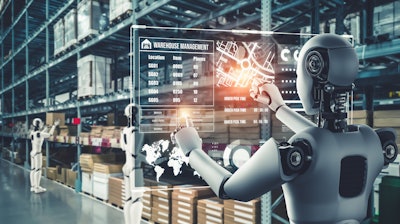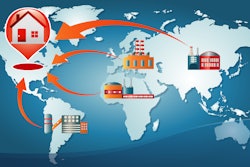
Robots have a lot to offer warehouse operators, and they can be tremendously helpful to busy warehouse associates. Yet, they haven’t been as welcomed into warehouses as they should be – or, rather, we need them to be. I believe that’s because there is some misunderstanding about how robots work, how people benefit from working alongside them, and how much work it might take to integrate and manage. There’s also an assumption that robots can be deployed in every warehouse setting without issue, or that deploying and managing them via the cloud would cause operational, data privacy and security issues – neither of which is completely true.
Separating fact from fiction
As you embark on your automation journey, it’s important to assess your operations and determine if robotics automation is a good fit. Look around your facility. What do you see? Aisles of inventory? Forklifts? People? Carts? Packout stations? Probably the typical sights. But look again. What might not be so obvious are all the things that may “trip” a robot up, especially an autonomous mobile robot (AMR). Stairs? Pallets and forklift tines? A sudden drop off at a loading dock? Water on the floor?
Though some AMRs are equipped with a combination of laser and sensor technologies that make them very aware of their surroundings and extremely agile navigators, many still rely exclusively on single plane laser that only allows them to see a thin slice of the world – and unable to “see” stairs or ramps. With this in mind, carefully assess whether robotics technology will work in your facility from a safety perspective.
There could be serious repercussions if robots aren’t mindfully deployed. Even sophisticated AMRs are still machines, like forklifts and other heavy machinery. And today there are strict policies, protocols, and procedures in place to ensure the safe operation of that equipment. We shouldn’t assume that because AMRs are more “intelligent,” or because they aren’t human operated, that some leniency is okay. Worker safety is not negotiable.
Yet, robot safety is becoming a lot like religion: people either believe in it or they don’t. All beliefs aside, you don’t want to have to explain why a worker was injured – especially not to your insurance company, legal team, a jury, or the public. Even if the recently introduced ANSI/RIA R15.08 safety standard for industrial mobile robots is voluntary on paper, the truth is that compliance is mandatory in the real world.
As we think about safety, it’s also important to think about how the AMR is controlled and managed within the facility to ensure smooth operations. Though many facilities are managed using cloud-connected software, such as the ERP and warehouse management system (WMS), there is still a common misconception that “the cloud can’t be used for robotics automation.”
It’s important to understand that AMRs are not like other types of automation solutions. They’re not even like other types of robots. They are autonomous units with self-contained controls and, therefore, can be fully deployed and managed using the cloud. In fact, because many AMRs are designed to be delivered as Software-as-a-Service (SaaS) or Robot-as-a-Service (RaaS) solutions, they are inherently cloud solutions – just like other SaaS solutions. Think about the SaaS-delivered task management or workforce management app your associates might have on their mobile computers today. Do you feel it is any less secure because it is delivered and managed through a cloud platform versus being installed and managed via on-premise servers? Probably not. I would bet you’re seeing significant benefits, including improved manageability, scalability, and security. You have 24/7 visibility into and control over the software’s performance, right? You may even have insight into and control over the host hardware via cloud-based software.
The same benefits extend to SaaS or RaaS automation solutions such as AMRs. There is around-the-clock professional-grade support, flexibility, and redundancy. Plus, cloud-based AMRs can be brought online within hours or days versus weeks or months, and workers can see an instant productivity boost, just like other cloud-based warehouse solutions. You can also monitor and regulate AMR performance 24/7 from anywhere, which allows for more proactive, efficient, and uninterrupted automation of workflows.
Asking the right questions is the recommended best practice
Whether you’re deploying robots for the first time or want to switch to a different type of robotics automation solution, it’s important to ask questions. Don’t presume what you know from past experience still applies today. Plus, the AMRs leveraged in a manufacturing environment may be different than the warehouse. So, before you commit to a robotics automation solution, consider:
- Are robots a good fit for my warehouse/DC/factory? Make sure you understand if there are any challenges in your facility (ramps, drop-offs, water, etc.) and work with solution providers to make sure the robot can effectively operate in your environment.
- What can be learned from a full-scale, real-world pilot? Many times, given the urgency to fill workforce gaps or increase fulfillment efficiency, decision-makers may rely on a “sideline” or virtual demo to get a feel for the system. But robots can behave remarkably well in a small test environment, and virtual demos can easily be staged. So, always take the time to see the solution running in your production environment before selecting a robotics automation solution, especially with AMRs and automated guided vehicles (AGV).
- What will it take to conform to the prevailing safety standards, including R15.08? Confirm your selected vendor and integration team has both the knowledge and willingness to follow and implement the current standards. Cutting corners could put your workers and business at risk.
- Do I fully understand the benefits of cloud-based robotics solutions, including the “value of the service”? Many companies are still defining their overall cloud strategies, and on-premise systems remain very common in supply chain settings. However, every ERP, WMS, and manufacturing execution systems (MES) will soon be cloud-based along with every connecting application in between. Why should we expect robotics automation systems to be hosted, secured, or managed any differently? The cloud allows for seamless integration of otherwise disparate systems, eliminating data, and functional silos across the entire business. This makes it easier to keep production and fulfillment workflows in constant motion, which is critical in this on-demand economy.
- What do my associates think about having robots as colleagues? Are they happy to see AMRs pulling up to retrieve picked items? Do they understand how AMRs will physically benefit them or increase their value as employees? Do they feel comfortable interacting with robots? You might find the answer is “yes” to the first question and “no” to the last two. No one has an AMR-equivalent at home. So, unlike a mobile computer that might be familiar, robot interactions might feel foreign and awkward – and you need to be prepared to address that through education and training that helps them become comfortable with their robot co-workers.
Once you have critically analyzed your options and understand the potential impacts of each on your business, systems, and employees, then you’ll be able to choose a solution you’re confident will help – not hurt – your workers.



















